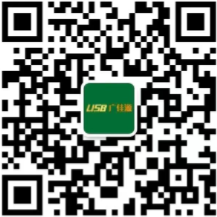 Mr. Chen:136-6225-2835
Mr. Chen:136-6225-2835
 Miss Chen:189-2385-0895
Miss Chen:189-2385-0895
Shenzhen Guangjiayuan Electronic Technology Co., Ltd
Mr. Chen: 136-6225-2835 (same WeChat account)
QQ: 979285705
Miss Chen: 189-2385-0895 (same WeChat account)
QQ: 2391552662
Chen Weiting :135-3824-4786 (same WeChat account)
Chen Weihao: 139-2459-4393 (same WeChat account)
Tel: 86-0755-33182327
Email: gjydz88@163.com
Website: www.usb-type.com
Address: Building 10, Hongxing Gebu Qixiang, Songgang Town, Bao'an District, Shenzhen, Guangdong Province
Recently, I lost a charging line to once again.
Originally, this is not a big problem. Just buy another one directly, and the price is not expensive.
But who knows, the cable used by the editor happened to be a bit special, with three different types of charging heads, Lightning, type-c, and micro USB interfaces, dragging along each line.
In the past few days before the new charging line arrived, I have experienced the anxiety of charging that I shouldn't have:
First, I ran to find my senior brother A and borrowed a type-c cable to charge my phone; Borrowed a Lightning cable from Senior Sister B to charge the iPad; Finally, I asked my roommate to borrow a micro USB to charge the headphones...
I have asked people to borrow charging wires too many times, and the editor feels a bit embarrassed.
Although now? The type-c interface has been widely used on Android phones and has almost become a standard feature. However, on other digital devices, the "legacy" issue of the interface has not been completely resolved.
Just as smartphones have become thinner and lighter in recent years, the interfaces of digital devices have also gone through a process of becoming smaller and thinner.
Taking the USB interface as an example, it evolved from the initial standard USB to the later mini USB, and then to the micro USB.
Despite the continuous thinning of interfaces, there has always been a particularly anti human design that does not support forward and backward blind insertion.
This is a bit awkward. For people like me who enjoy playing with my phone at night, blind plugging before going to bed after turning off the lights has almost never been successful, and many times I almost miraculously plug in the charging head.
It was not until the emergence of the type-c interface, which could be inserted both positively and negatively, that the global problem of "USB never plugs in" was solved (of course, the maverick Apple also had the Lightning interface, which also collected a wave of MFi taxes).
It's incredibly convenient to insert without having to distinguish the direction beforehand, and without having to find the right front or back. The type-c interface can be said to perfectly enhance our experience and happiness of digital devices.
The appearance of the type-c interface is different, and it's easy to use and easy to use. Smart manufacturers are reluctant to use it for their own products, which is another matter.
Just like this time when the editor lost the cable, if all of his device interfaces were type-c, all he had to do was borrow another cable. Why bother so many people to borrow different charging cables.
That being said, even if your current computer, phone, and other devices have already used the type-c interface, in many cases it is just a superficial version, and many are residual versions.
At this point, you may have questions. Even though the interfaces have the same type-C appearance and can all be charged with the same cable, how could the concept of residual blood suddenly emerge like the processor?
Before starting to explain, I have to mention a very powerful non-profit organization: the USB-IF Association (USB Implementers Forum), which is now the USB Standardization Organization.
Since its establishment, this organization has developed policies including PD fast charging and USB? Many technical specifications, including interfaces, have provided a unified standard for the expansion of peripheral devices such as computers/mobile phones.
Type-C is a brand new interface developed and launched by the USB standardization organization in 2014 to address the shortcomings of inconsistent USB interface specifications and one-way transmission during charging.
Its full name is the USB type-c interface, which is actually a physical hardware interface form of USB. Before type-c, of course, there were also type-a and type-b interfaces.
The appearance of various interfaces is not difficult for us to understand by definition. As long as the pins and appearance of the interface are the same as type-c, it can be called a type-c interface.
In fact, at first glance, the type-c interface is not much different from other interfaces, that is, it is small in size and supports forward and backward insertion. It seems that this advantage is not enough to unify other interfaces?
This also benefits from? USB-IF later introduced an alternate mode that supports the use of the USB type-c interface for other purposes.
Many friends also know that on a computer, in addition to the power charging port, there are often several expansion interfaces such as HDMI, DVI, VGA, DISPLAY, USB, and so on.
Putting so many interfaces together, although convenient to use, it also takes up a lot of physical space. With alternative modes, the type-c interface becomes even more powerful.
A type-c interface can not only serve as a power port, but also plug in USB headphones, external keyboards, or monitors.
Whether it is data transmission, audio and video output, charging, and other functions, they can all be achieved through type-c.
But as mentioned earlier, type-c is only an interface form. To achieve functions such as those mentioned earlier, having an interface alone is not enough, and corresponding interface transmission protocol support is also needed.
If the type-c interface is compared to a highway, trucks, buses, and cars that want to drive on this road must comply with the corresponding protocol regulations.
At this point, the vehicle model is like an interface function, and the protocol specifies the vehicle model that can be used on the road and the fastest speed.
On the type-c carrier, the most common interface transfer protocols are USB X.X version and Thunderbolt3 (Thunderbolt 3).
The protocols of USB X. X include versions USB2.0, usb3.1 GEN1, usb3.1 GEN2, usb4, etc. The data transfer rate increases sequentially with the version number.
Taking the USB 3.1 GEN2 version protocol as an example, the maximum transmission rate is 10Gb/s. Although its transmission rate is already fast enough, there is still a significant gap compared to the Thunderbolt 3's full speed of 40Gb/s.
This leads to two mobile phones or computers, even if both use type-c interfaces, experiencing vastly different interface performance differences due to different transmission protocols.
It only takes 10 minutes for a phone using the USB 3.1 Gen1 protocol to connect to a computer to transfer files and backup data from an album.
On a phone using the USB 2.0 interface protocol, it may take over three hours to connect files and photo album backup data to the computer...
If the parameters are not specifically specified, it is probably USB 2.0
It's the same on a computer.
The same is the type-c interface, where one can only be charged using the type-c interface, while the other can use the type-c interface to connect four 4k monitors or graphics card docks externally, with varying scalability.
Although the type-c interface is a trend to replace other interfaces in the future: it supports a wider range of applications and more advanced transmission protocols... so far, we cannot completely replace the old interface.
Most users' mouse, keyboard, monitor, Portable storage device and other devices still need? Type-a port, manufacturers' violent promotion is equivalent to turning the products in users' hands into electronic waste (unless using adapters).
At the same time, although many manufacturers equip their products with type-c interfaces, they are not actually "full blooded" interfaces:
There are fewer valid pins and only supports low-speed protocols... To put it bluntly, it is still a superficial thing made to save money, and consumers are not familiar with the type-c interface now, although they may not be able to use some features.
Due to these various issues, the true popularization of the type-c interface still takes time, but which technology is not like this?
If one day the cost drops and consumer awareness increases, making type-C completely popular, then the editor who loses data cables all day will no longer be afraid to steal one from anyone's desk and run away.
There are too many standards now, and I have interface phobia
Contact person:
Mr. Chen 136-6225-2835 (same WeChat account)
Miss Chen 189-2385-0895 (same WeChat account)
Chen Weiting 135-3824-4786 (same WeChat account)
Chen Weihao 139-2459-4393 (same WeChat account)
Address:
Building 10, Hongxing Gebu Qixiang, Songgang Town, Bao'an District, Shenzhen, Guangdong Province
 |
 |
| Technology 1 | Technology 2 |